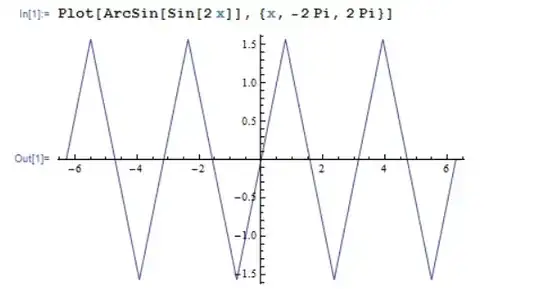While trying to differentiate $\sin^{-1}(2x\sqrt{1-x^2})$, if we put $x = \sin\theta$, we get,
\begin{align*} y &=\sin^{-1}(2x\sqrt{1-x^2})\\ &= \sin^{-1}(2\sin\theta\sqrt{1-\sin^2\theta})\\ &= \sin^{-1}(2\sin\theta\cos\theta)\\ &= \sin^{-1}(\sin2\theta)\\ &= 2\theta\\ &= 2\sin^{-1}x. \end{align*}
So, \begin{align*} \frac{dy}{dx} &= \frac{2}{\sqrt{1-x^2}}.\\ \end{align*}
But if we put $x = \cos\theta$, we get,
\begin{align*} y &=\sin^{-1}(2x\sqrt{1-x^2})\\ &= \sin^{-1}(2\cos\theta\sqrt{1-\cos^2\theta})\\ &= \sin^{-1}(2\cos\theta\sin\theta)\\ &= \sin^{-1}(\sin2\theta)\\ &= 2\theta\\ &= 2\cos^{-1}x. \end{align*}
This time,
\begin{align*} \frac{dy}{dx} &= -\frac{2}{\sqrt{1-x^2}}.\\ \end{align*}
We are perplexed about the difference in sign between the two results and thought that you could help.
(We understand that we can differentiate $\sin^{-1}(2x\sqrt{1-x^2})$ directly, without any substitution, which gives us the first result.)
